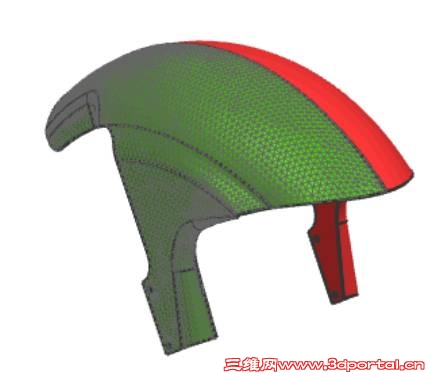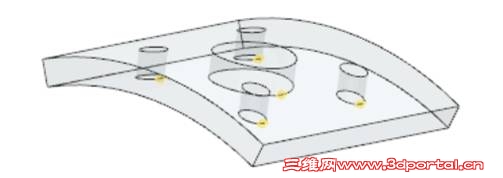马上注册,结识高手,享用更多资源,轻松玩转三维网社区。
您需要 登录 才可以下载或查看,没有帐号?注册

x
复合材料NX前后处理案例之Modeling 3DLaminates 用三维铺层元素建模有很多优势,但同时二维平面的应力假设也将不成立。下面列出3D laminate elements的优势和劣势: 优势: 3D elements provide through-thickness stresses, and a better estimate of transverse shear stresses •Solvers scale the 3D laminate thickness as a function of the nodal coordinates. •This allows for the entire layup to stretchin the stackup direction, easily modeling variable thickness plies like cores. •Versatility. You can model the laminate stack as: •A single 3D element layer, where one elementreferences all the plies. •A different 3D layer for each ply in thelayup. •Any number of layers, each pointing topre-defined plies •3D inflation accounts for the presence of resin pockets at ply drop-off areas 劣势: Increased number ofnodes and potentially elements, more physical properties means longer solution times. •Using a single 3D element through the thickness may not allow for adequatebending stiffness representationof relatively thin parts. 详细内容见附件。 另外,文档内容还主要包括: (1)如何创建3D laminates (2)solid laminate 的属性及建模,算例包含如下几个: 算例1在带孔曲面衬垫上直接定义3D层压材料单元(Create a 3D laminate on a pad) 3D模型:带孔曲面衬垫 算例概述: 直接在3D实体的两个面之间建3D扫掠网格,然后对网格赋实体层压材料物理性质(solid laminate properties)(包含操作:用字符串定义铺层,修改铺层属性、添加子铺层组等等)。 算例2基于全局铺层拉伸2D网格(Extrude the 2D mesh using the global layup) 3D模型:挡泥板 算例概述: 从一个已经定义了层压板物理性质的FEM文件出发,拉伸全局铺层成为3D单元(extrude layup to 3D),检查拉伸出的3D铺层实体,并以此为基础改变铺层厚度,smooth拉伸,把拉伸的单元集合成一个3D层 算例3基于全局铺层填充成实体(Create a solid laminate using the globallayup) 3D模型:带孔曲面衬垫 算例概述: 首先定义2D关联网格,导入已有的层压材料物理性质来创建全局铺层,通过填充层压材料的方法在3D实体的两个面之间定义复合材料,并定义新的材料方向,检查创建的区域(Zones)。


- ~9 `2 c% Z1 Y8 L( ] : @0 @; x- u: ~; w* I& u
|